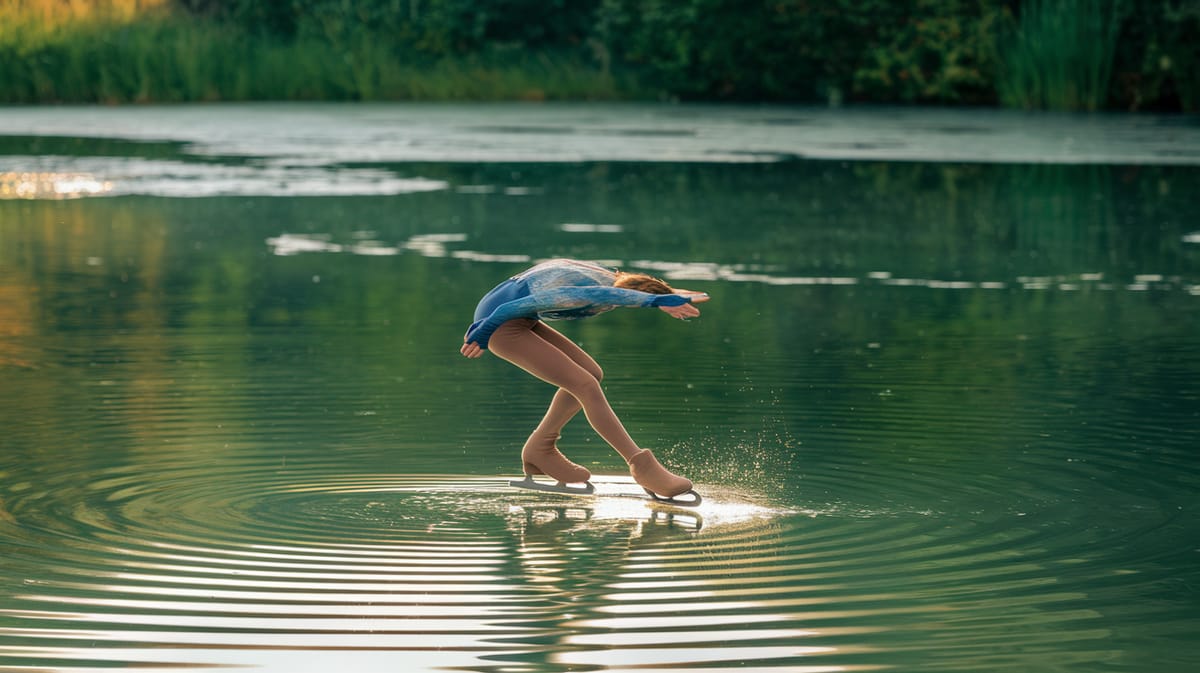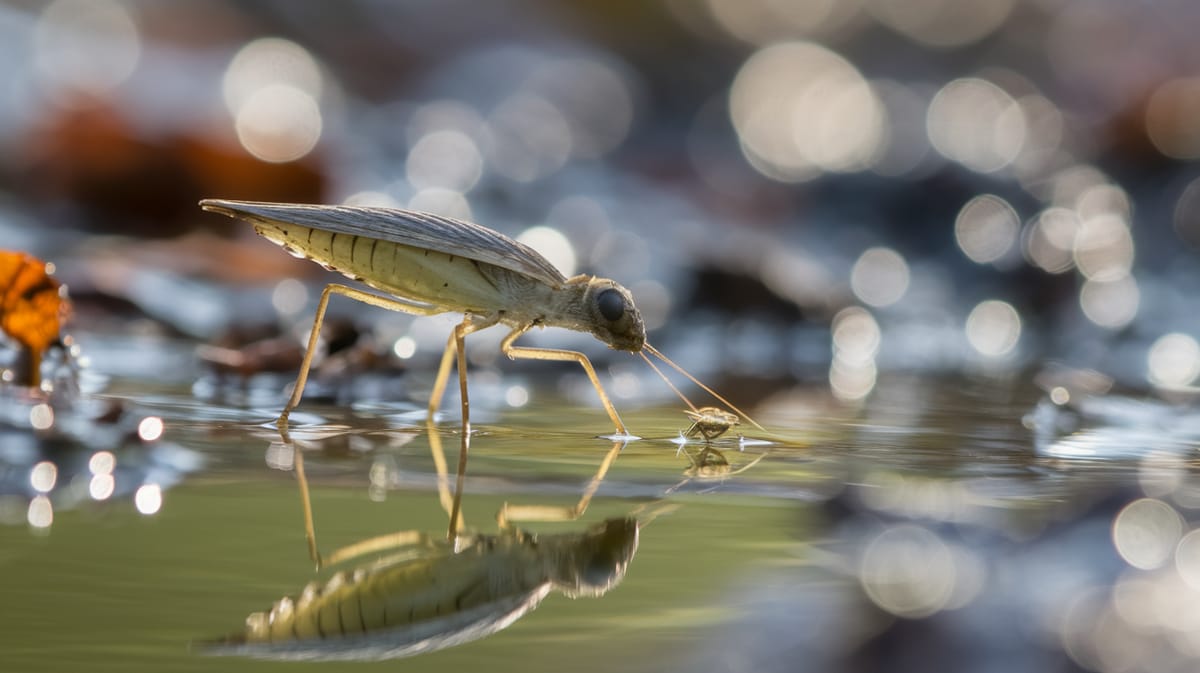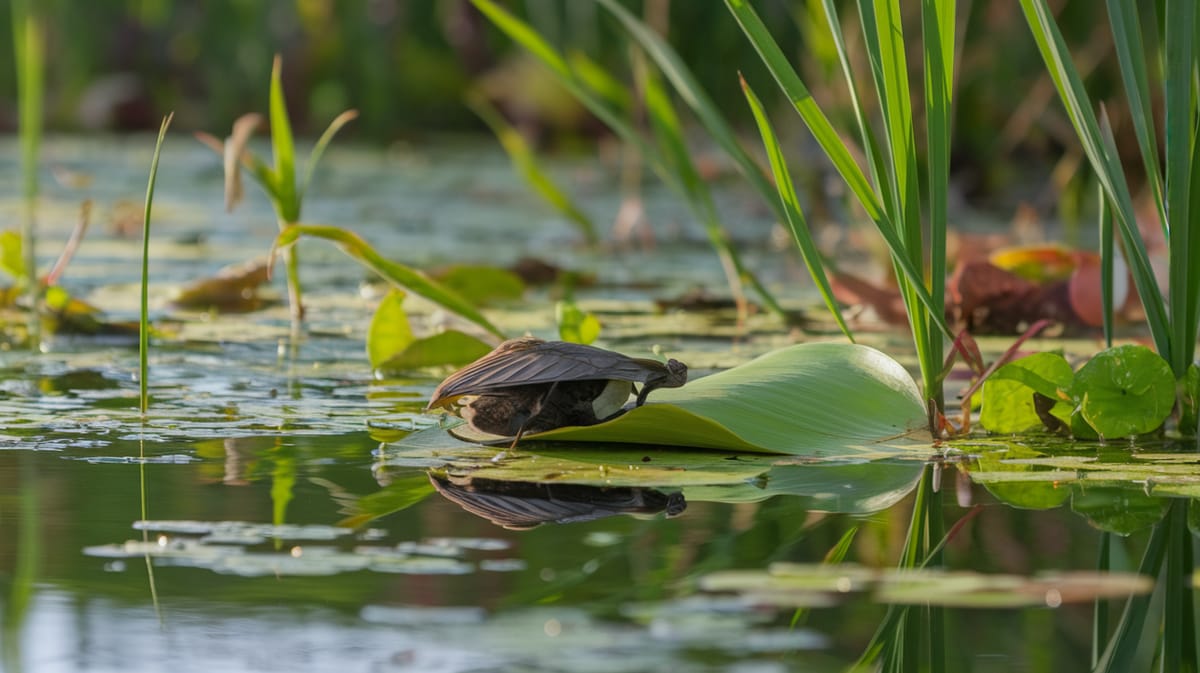Pond Skater
Gliding effortlessly across water surfaces, the Pond Skater showcases remarkable balance and agility, using surface tension to hunt and evade predators. Its presence indicates healthy aquatic ecosystems.

Key Insights at a Glance
Did You Know?
Taxonomy & Classification
Pond skaters are extraordinary insects with hydrophobic legs enabling them to stride across water surfaces, exploiting surface tension to hunt prey. Let's understand the evolutionary journey and classification of these remarkable predators.
Global Presence
Pond skaters encompass over 700 species within the Gerridae family, thriving in freshwater habitats worldwide.
Evolutionary Adaptations
Emerging during the Mesozoic Era, pond skaters adapted unique leg structures for water locomotion, enduring through significant ecological changes.
Lifecycle and Growth
A remarkable journey of transformation from Egg to Adult.
Egg
Eggs are laid on aquatic plants, providing protection while embryos develop and prepare for life in the water.
Nymph
Nymphs emerge with small bodies, growing and shedding exoskeletons multiple times as they develop adult features.
Adult
Adults, with fully developed wings and long legs, excel at skating on water surfaces and hunting prey.
Dietary Habits
A skilled hunter on water surfaces, this insect preys on aquatic insects, larvae, and captures drifting prey opportunistically.
| DIET TYPE | DESCRIPTION |
|---|---|
| Primary Diet | Primarily targets mosquito larvae, water beetles, and small aquatic insects found in ponds and streams. |
| Secondary Diet | Occasionally feeds on small fish fry and tadpoles, especially when insect prey is scarce in the environment. |
| Occasional | Rarely consumes plant material or detritus, usually when natural prey options are extremely limited. |

Behaviour and Adaptations
Discover the fascinating traits that enable the Pond Skater to glide effortlessly across water surfaces.
Surface Tension Mastery
Utilizes hydrophobic legs to stay afloat and move swiftly on water.
Vibration Sensitivity
Detects minute ripples to locate prey and avoid threats.
Agile Predation
Quickly captures prey like insects trapped on the water surface.
Ecosystem Impact
Skimming across the water's surface, Pond Skaters play a crucial role in aquatic ecosystems.
Surface Predator
Consumes mosquito larvae and other insects, helping control their populations.
Food Web Connector
Serves as prey for birds and fish, linking various trophic levels.
Water Quality Indicator
Presence indicates healthy water bodies and balanced ecosystems.
Conservation Challenges
Understanding and addressing the major threats to Pond Skater populations.
Habitat Degradation
Water pollution and shore development threaten Pond Skater habitats.
Climate Change
Altered temperatures and precipitation affect Pond Skater breeding and survival.
Invasive Species
Non-native predators and plants disrupt Pond Skater ecosystems.
Frequently Asked Questions
How long do Pond Skater live?
Pond Skaters typically live for about a year. Their life cycle includes egg, nymph, and adult stages. They lay eggs on aquatic vegetation, and the nymphs develop in water before becoming adults. Most adults do not survive beyond a single season.
What do Pond Skater eat?
Pond Skaters primarily eat insects that fall onto the water surface. They use their front legs to detect vibrations and capture prey like mosquitoes, flies, and other small insects. This diet helps control insect populations in their aquatic habitats.
Are Pond Skater poisonous?
Pond Skaters are not poisonous to humans or animals. They pose no threat as they do not produce toxins or venom. Their primary defense is their ability to escape quickly across water surfaces when threatened.
Are Pond Skater endangered?
Pond Skaters are not considered endangered. They are common in many freshwater habitats around the world, including ponds, lakes, and slow-moving streams. Their populations are generally stable, though local environmental changes can affect them.
What do Pond Skater symbolize?
Pond Skaters often symbolize adaptability and balance. Their ability to move effortlessly across water without sinking represents staying afloat during life's challenges. In some cultures, they are seen as symbols of agility and resourcefulness.
Do Pond Skater bite?
Pond Skaters do not bite humans. Their mouthparts are designed for piercing and sucking small insects, not for biting humans or animals. They are harmless and pose no danger to people.
What color are Pond Skater?
Pond Skaters are typically dark brown or black with a glossy appearance. Their coloration helps them blend into the water surface, providing camouflage from predators above and below the water.
Does a Pond Skater have wings?
Yes, Pond Skaters have wings. While they are known for gliding on water, some species can fly to new locations if necessary. Their wings fold flat over their bodies when not in use, aiding their streamlined form.
What does a Pond Skater look like?
Pond Skaters have long, slender bodies and elongated legs that allow them to distribute their weight evenly on the water's surface. They have two long middle legs for propulsion and shorter front legs used for catching prey.
Is a Pond Skater an insect?
Yes, a Pond Skater is an insect. They belong to the order Hemiptera, commonly known as true bugs. They are characterized by their piercing-sucking mouthparts and their ability to walk on water surfaces due to specialized leg structures.
Related Insects
Discover insects with similar characteristics to Pond Skater - including shared habitats, diets, and taxonomic classifications
Share this profile
Help others discover Pond Skater
